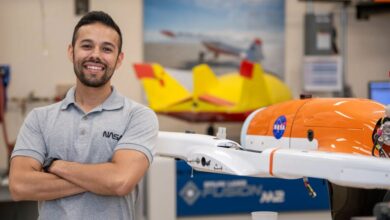NASA Scientists to Discuss Oct. 14 ‘Ring of Fire’ Solar Eclipse

NASA will host a media teleconference at 4 p.m. EDT on Tuesday, Sept. 26, to discuss the upcoming annular solar eclipse. The annular eclipse will cross the U.S. from Oregon to Texas on Saturday, Oct. 14, with a partial solar eclipse visible throughout the contiguous U.S.
Audio of the call will stream live on NASA’s website.
The following participants will discuss the science of eclipses, how to safely watch the Oct. 14 eclipse, and the next total solar eclipse on April 8, 2024:
- Peg Luce, acting Heliophysics division director, NASA Headquarters
- Madhulika Guhathakurta, heliophysics program scientist, NASA Headquarters
- Elizabeth MacDonald, heliophysics citizen science lead, NASA’s Goddard Space Flight Center
- Alex Lockwood, strategic content and integration lead for NASA’s Science Mission Directorate, NASA Headquarters
To ask questions during the teleconference, media must RSVP no later than two hours before the event to Sarah Frazier at sarah.frazier@nasa.gov. NASA’s media accreditation policy is available online.
Also known as a “ring of fire” eclipse, an annular solar eclipse occurs when the Moon is near the part of its orbit that is most distant from Earth. Because the Moon is farther from Earth than it is during a total solar eclipse, the Moon doesn’t block out the entire Sun, instead it leaves a bright ring of Sun visible at the peak of the eclipse.
This “ring of fire” is visible only in the narrow path of annularity that stretches from Oregon to Texas, as well as parts of Mexico, Central America, and South America. Outside the path of annularity, people across the contiguous U.S., Puerto Rico, and parts of Alaska and Hawaii will have the chance to see a partial solar eclipse, when the Moon covers part of the Sun without creating the “ring of fire” effect.
All eclipse-watchers on Oct. 14 will need to use special eye protection – such eclipse glasses or a specialized solar filter – or an indirect viewing method to safely watch the eclipse. Such safety measures must be used throughout the entire eclipse, no matter a viewer’s location, as even the small ring of Sun visible at the peak of the annular eclipse is dangerous if viewed directly.
Live coverage of the annular solar eclipse will air on NASA TV and the agency’s website on Oct. 14 from 11:30 a.m. to 1:15 p.m.. The public also can watch live on agency social media accounts on Facebook, X, and YouTube.
The April 8, 2024 total solar eclipse will cross the U.S. from Texas to Maine.
For more information about eclipses, visit:





